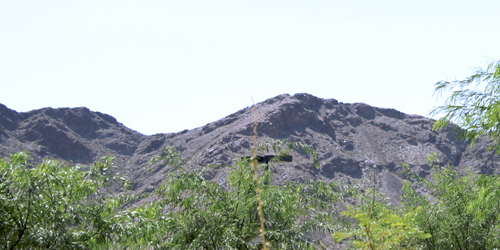Henderson, Nev. Nevada State College will use funding it received from a Desert Research Institute grant to augment two three-week archaeological field school sessions June 16-July 4 and July 7-25 for remote sensing to aid in the search of prehistoric Anasazi agricultural fields and seasonal dwellings in northwestern Arizona.
DRI received a $281,879 grant over three years from the National Aeronautics and Space Administration (NASA) to use remote sensing to estimate soil, vegetational and geomorphical characteristics to determine the potential of landscape features to sustain productive prehistoric maize agriculture in the Mount Trumbull region of northwest Arizona, an arid region of the Colorado Plateau. Previous research shows a high density of prehistoric Anasazi habitation sites.
This year we will be conducting archaeological survey and site recording; the session includes instruction in basic laboratory procedures and analyses of artifacts collected in previous years as well, said Paul Buck, who is a member of the faculties at both NSC and DRI. We will record archaeological sites near Uinkaret Pueblo at the foot of Mount Trumbull. A number of C-shaped pueblos and field house are known but not formally recorded, and it is likely many other sites will be found and recorded.
During each of the past five summers, the archaeology field school at NSC has accepted 8-16 students. This year, applications will still be accepted through June 20 for the session beginning July 7. Students will earn four college credits for completing this unique coursework. Participants come from a variety of academic disciplines, including everything from environmental science to education. There is also an opportunity for up to three NSC students to work as assistants at the site, gaining experience with technical archaeological skills like excavating and surveying.
Our model will provide some predictive capability in the region for prioritizing subsequent survey intensity, Buck said. The research proposed here may also allow planners of the new Grand Canyon-Parashant National Monument (where the Mount Trumbull study area is located) to avoid particularly sensitive areas when designing recreation and other facilities for the national monument.
Other DRI faculty involved in obtaining the NASA grant were Don Sabol and Dave Rhode.
Nevada State College opened its doors to students in September 2002 after the Board of Regents and the Nevada State Legislature determined the need for enhanced educational opportunities in Southern Nevada in 1997. The college currently enrolls 1,950 students.
NSC’s main campus is located on more than 500 acres in the foothills of Henderson and provides progressive bachelor’s programs in several in-demand fields of study. Nevada State College offers a low student-to-professor ratio and competitive tuition rates.
For more information on Nevada State College, call : 702.990.2000 or visit : nsc.edu.
Arizona Field Camps for NSC Students Funded through DRI-NASA Grant
